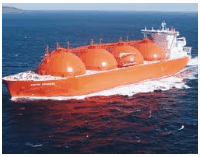
I have written extensively on how the burgeoning shale gas boom underway in the US poses a direct threat to Australian exports of thermal coal and liquefied natural gas (LNG).
Australian thermal coal exports have already been adversely affected as significant coal-to-gas switching in US electricity generation has led to large quantities of high quality thermal coal being dumped on the world market, depressing global thermal coal prices.
There is far less certainty, however, around the extent to which Australian LNG exports may come under competitive pressure from US LNG. While there are reportedly 15 projects seeking approval to export US LNG to non-free trade agreement (FTA) countries, these are facing significant opposition from domestic gas consumers, which fear that US natural gas prices could rise significantly in the event that significant quantities of LNG are approved for export.
A brillant article in Chemical & Engineering News explains these dynamics:
The U.S. is in the midst of an energy transformation. Technologies that free fossil-fuel reserves, once trapped in shale, have radically shrunk natural gas imports. By 2020, the nation is expected to produce more gas than it needs. As the country approaches this milestone, it faces a question long asked in other countries with abundant energy resources: How much should we use at home and how much should we sell abroad?
Some chemical companies and other industrial natural gas consumers worry that large amounts of exports, in the form of liquefied natural gas (LNG), will raise domestic prices, hike manufacturing costs, and undercut their international competitiveness. They would like to see the Department of Energy slow projects planned by energy companies to export natural gas.
Oil and gas companies, on the other hand, say exports will have little impact on domestic prices. They are pushing for more than 15 new shipping terminals, sufficient to send a full third of current domestic LNG consumption around the world. They believe free LNG trade will benefit the U.S. economy and foster job creation.
Politicians are on both sides of the argument. DOE is treading carefully. But all involved realize that their actions around this important new resource could have a big impact on the health of the U.S. economy…
More than a half-million gas wells are operating in the U.S., a 50% increase since 2000, according to the Energy Information Administration… EIA says the U.S. has 300 trillion cu ft of gas in proven reserves and potentially 10 times that amount in unproven reserves, much of which is in shale deposits. By comparison, the U.S. currently consumes about 25 trillion cu ft of natural gas annually. If current trends continue, EIA estimates, the U.S. will be producing more gas than it consumes within the next seven years…
Asian LNG import prices are $15 per thousand cu ft or more, and European prices are above $10. With U.S. prices under $4.00, domestic companies want to take advantage.
A score of firms are seeking export licenses from DOE. If all of these licenses are granted, the gas industry will be permitted to export roughly 30 billion cu ft of gas per day, or about one-third of current U.S. consumption.
Most of the licenses are associated with enormous projects to build gas liquefaction plants…
The distinction between FTA and non-FTA countries is a big one. Only four FTA countries—South Korea, Australia, Mexico, and Canada—are large consumers of natural gas, and of these, only South Korea is a major LNG importer. Some of the world’s largest LNG importers, such as Japan, China, and the U.K., are non-FTA countries. Limiting the number of non-FTA licenses would severely crimp the market available to LNG exporters.
Consequently, DOE began a two-part assessment of the impact of exports. The first part was a microeconomic review of the effect of LNG exports on domestic consumption, production, and prices; the second was a study of macroeconomic impacts.
Both studies are now complete. The first, by EIA, found that more LNG exports would lead to moderately higher domestic gas prices, more domestic production, reduced domestic gas consumption, and increased natural gas imports from Canada via pipelines. Natural gas bills for all sectors of the economy would increase by 3 to 9%.
The second study, by the private firm NERA Economic Consulting, used data from EIA’s study and looked at the cumulative macroeconomic impact of LNG exports on the U.S. economy.
In December, NERA released its assessment of LNG exports, which was upbeat for most of the economy. It found that exports would add between $4.4 billion and $47 billion per year to gross domestic product by 2020. However, not all sectors would fare equally.
The chemical industry and other high energy users would face declines in profits and revenues. But the impact would be manageable, according to NERA, with a drop in forecasted growth of less than 1% annually. The report also noted that people working in areas unrelated to the gas industry would not gain from production and export growth, yet would still face higher gas prices.

